Words: Liam Friary
Images: Chris Auld
It’s July, in France. Bastille Day to be exact. I have lined up a front row seat in the Mavic Neutral Service Vehicle, following a bike race around the lovely French countryside. Hang on – this isn’t just a bike race! This is the bloody Tour de France and it’s Stage 9 of the 2019 edition! The riders make the race and the fans make the atmosphere, but without a massive motorcade of support cars, the Tour would be chaos. No doubt you have spotted the yellow Mavic Neutral Service Vehicles when you’ve watched Le Tour on your TV set. The service started in 1973 at the Paris-Nice; the result of an idea from the previous years’ Critérium du Dauphiné, when Mavic’s then chairman, Bruno Gormand, lent his car to a Directeur Sportif whose own transport had broken down. Mavic really changed the game and since then there’s been countless stories from the pros who have benefitted from the neutral service cars. Bernard Thevenet, twice a Tour winner in the early days of neutral service – and a Mavic rider since the early 1960s – remembers it as a “revolution”, recalling how in the days before the yellow cars, a broken bike was more often than not the end of your race.
Back in the 70s, the Mavic Neutral Service team took thirty seconds to change a wheel, but this was considered too long. So, the mechanics took to training in the factory yard, and by the 80s they’d honed the time down to 15 seconds for a rear wheel, 49 and 10 for a front. The yellow car came to have a different meaning for professionals too. Back in the day, before the technology of race radios came to be, when they got into a breakaway group the pro riders would always check behind for the neutral service car: if it was allowed into the gap then they knew they had a decent lead.
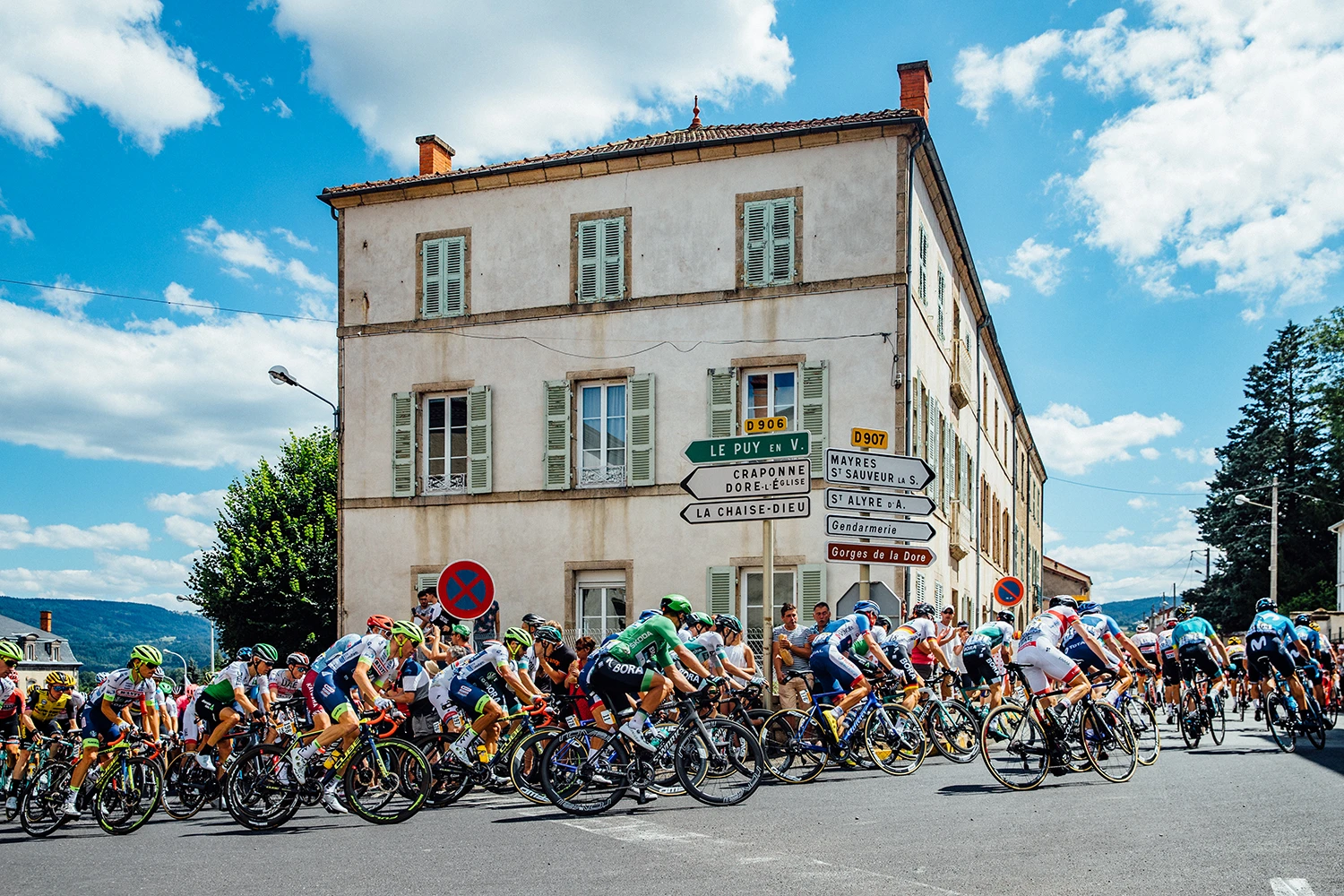
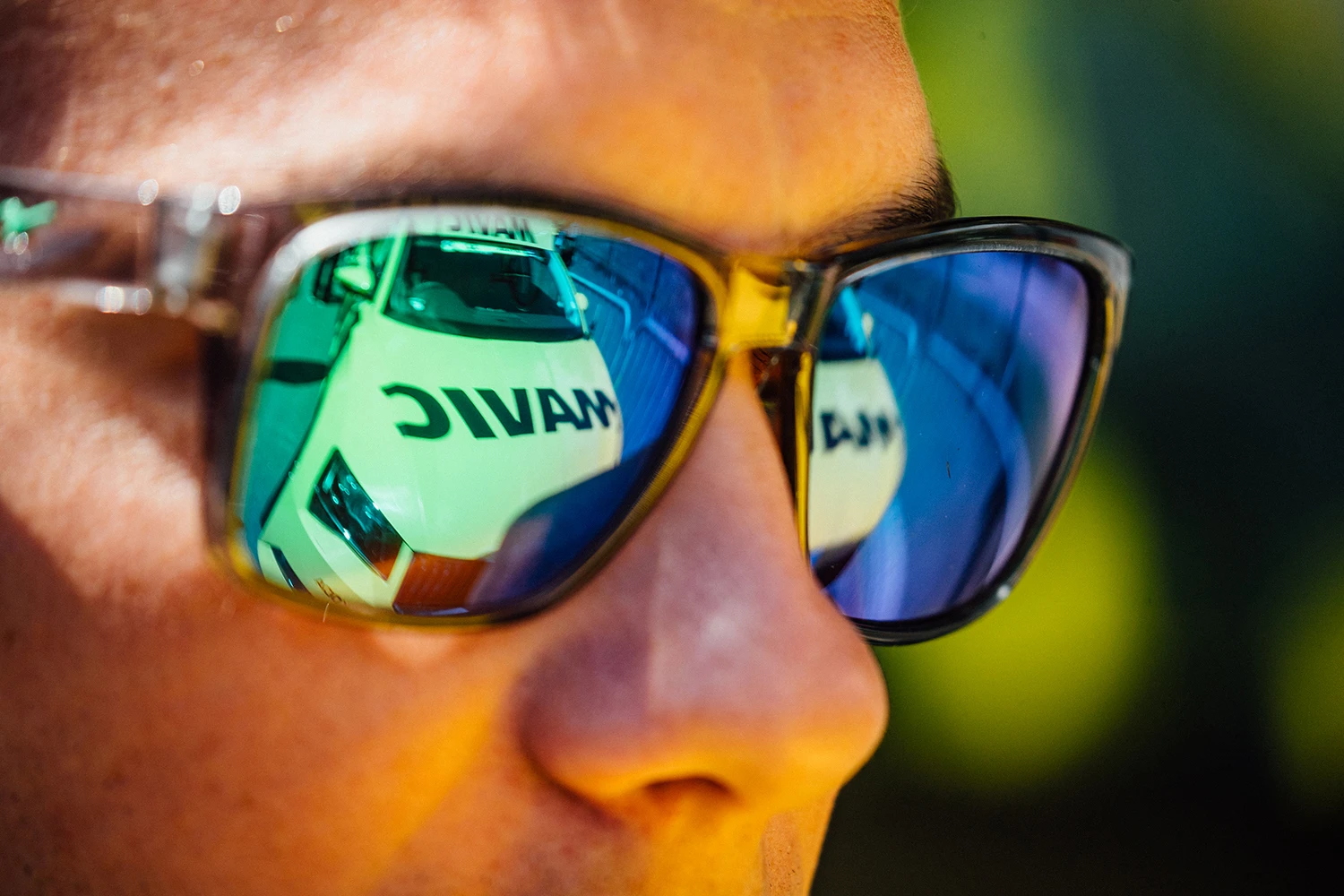
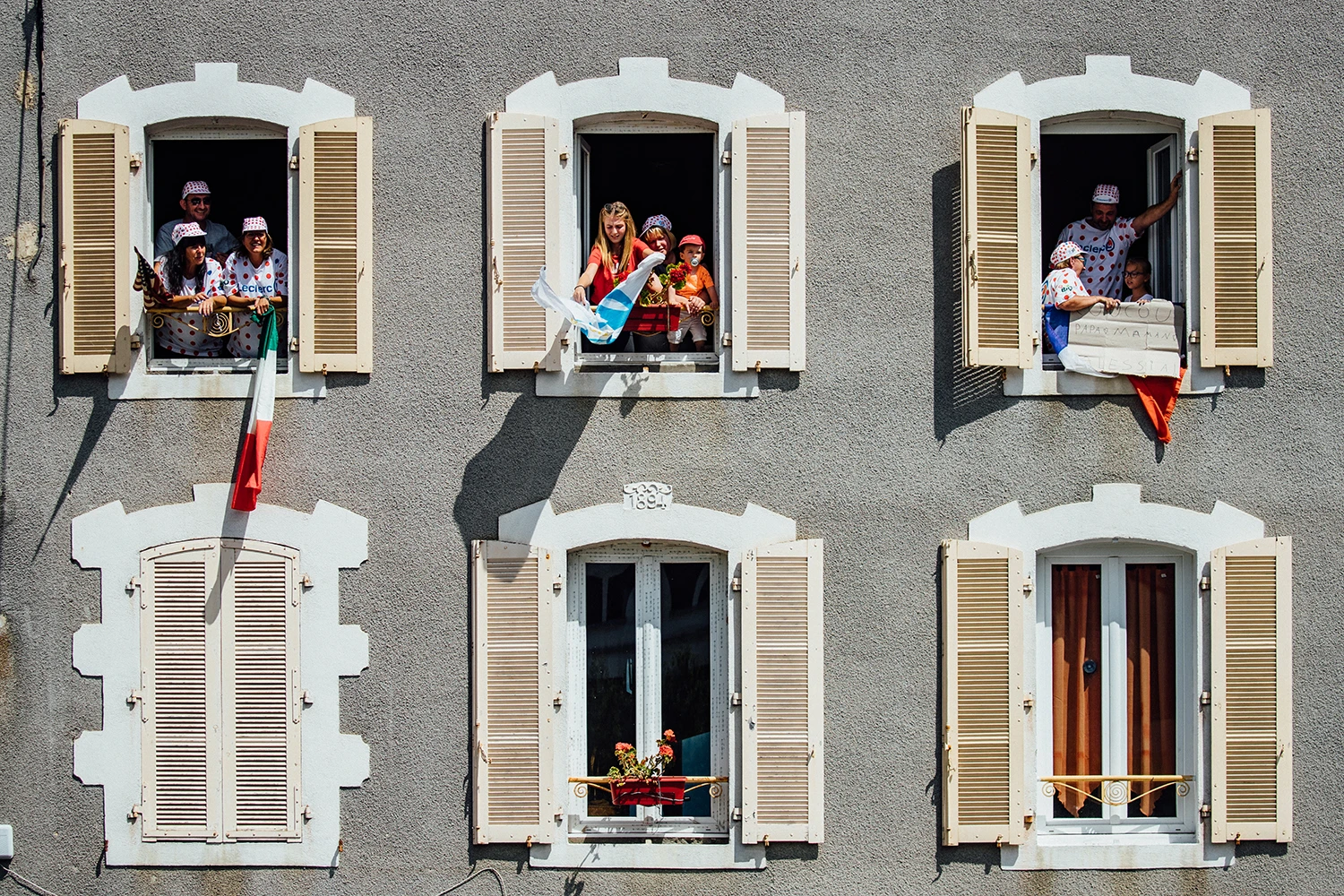
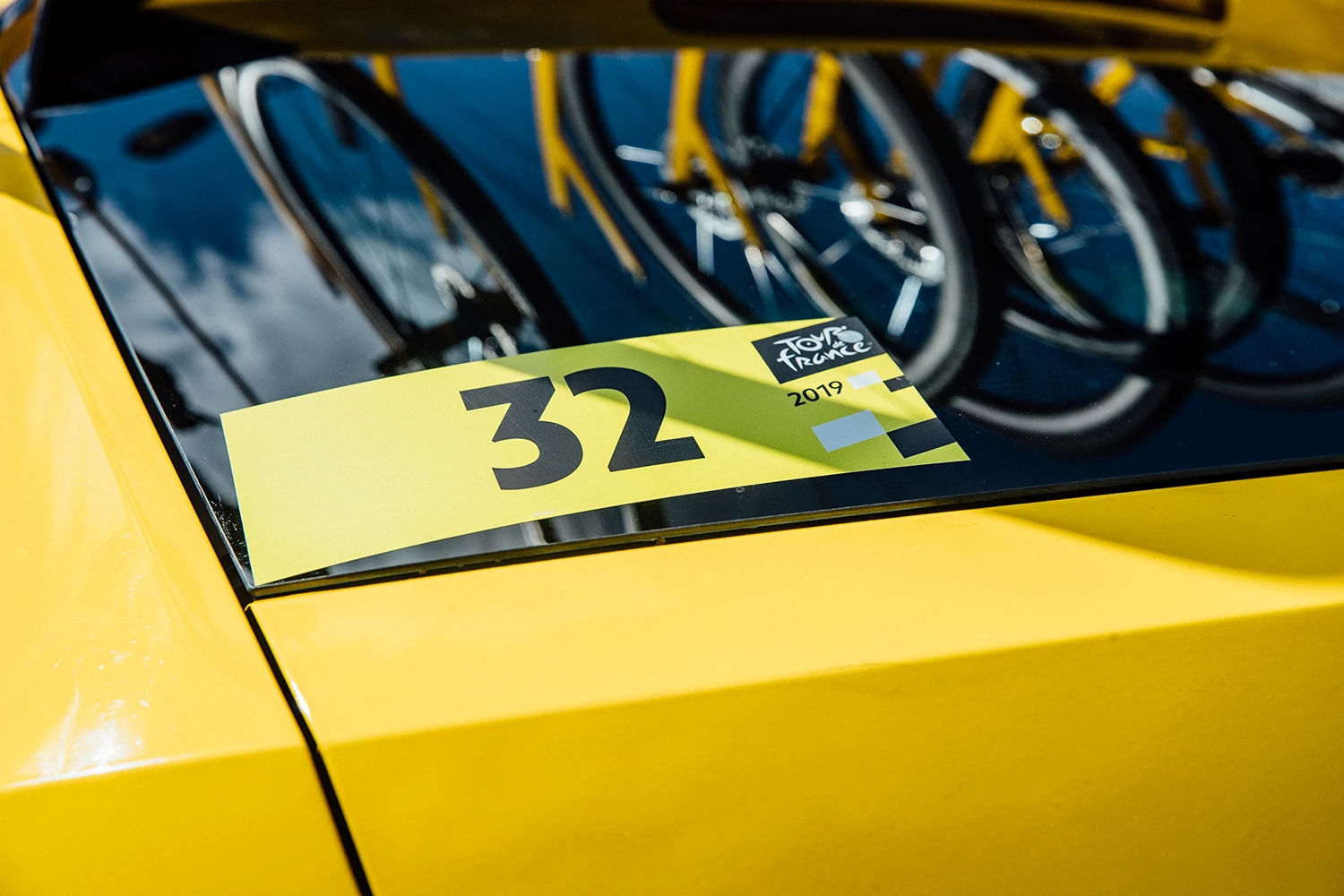
Today, Maxime Ruphy is my driver. He has worked on the service course for six years – in fact, in his first year at Mavic, they sent him to work on the Tour. At that stage he was only 21. He hails from La Culaz, a small ski village. He grew up ski racing but at age 15 he’d had enough and decided to turn to cycling. He rode at a high level for six years, however, after a few setbacks along the way, he decided to get a ‘real job’ at Mavic. His experience working as a bike mechanic, to pay the bills whilst racing, gave him a good foot in the door. In his first Tour he was a mechanic and has switched between wrenching and driving over the years. Make no assumption, being the driver is no small task and can be very stressful. It’s like rally driving but with crazy crowds on the roadside, pro riders going back and forth, the race radio constantly blaring out updates, plus other motorcycles and pro team vehicles out on the course.
Max tells me about the commitment required for this job. Being away from home for more than 200 days a year is not for everyone. Days on the road and living out of a suitcase is common within the pro-cycling circus, so you have to be seriously dedicated. Max says that above all else you must have the passion needed to sustain a life like this. I ask Max about his most memorable moment. He grins and tells me it was when he fixed Rigoberto Urán’s derailleur in the 2017 Tour de France: he leaned out the window to adjust the derailleur, popping the chain onto the 11 sprocket. This gave Urán the choice of a high 53/11 gear and a medium 39/11 gear – enough for him to not only stay in the race, but also to claim the victory ahead of Froome and beat Barguil and Fuglsang in a sprint finish. Oh, and he also helped Philippe Gilbert in the 2018 Tour de France, by pulling him out of theditch after he crashed badly. These are the definition of ‘better work stories’!
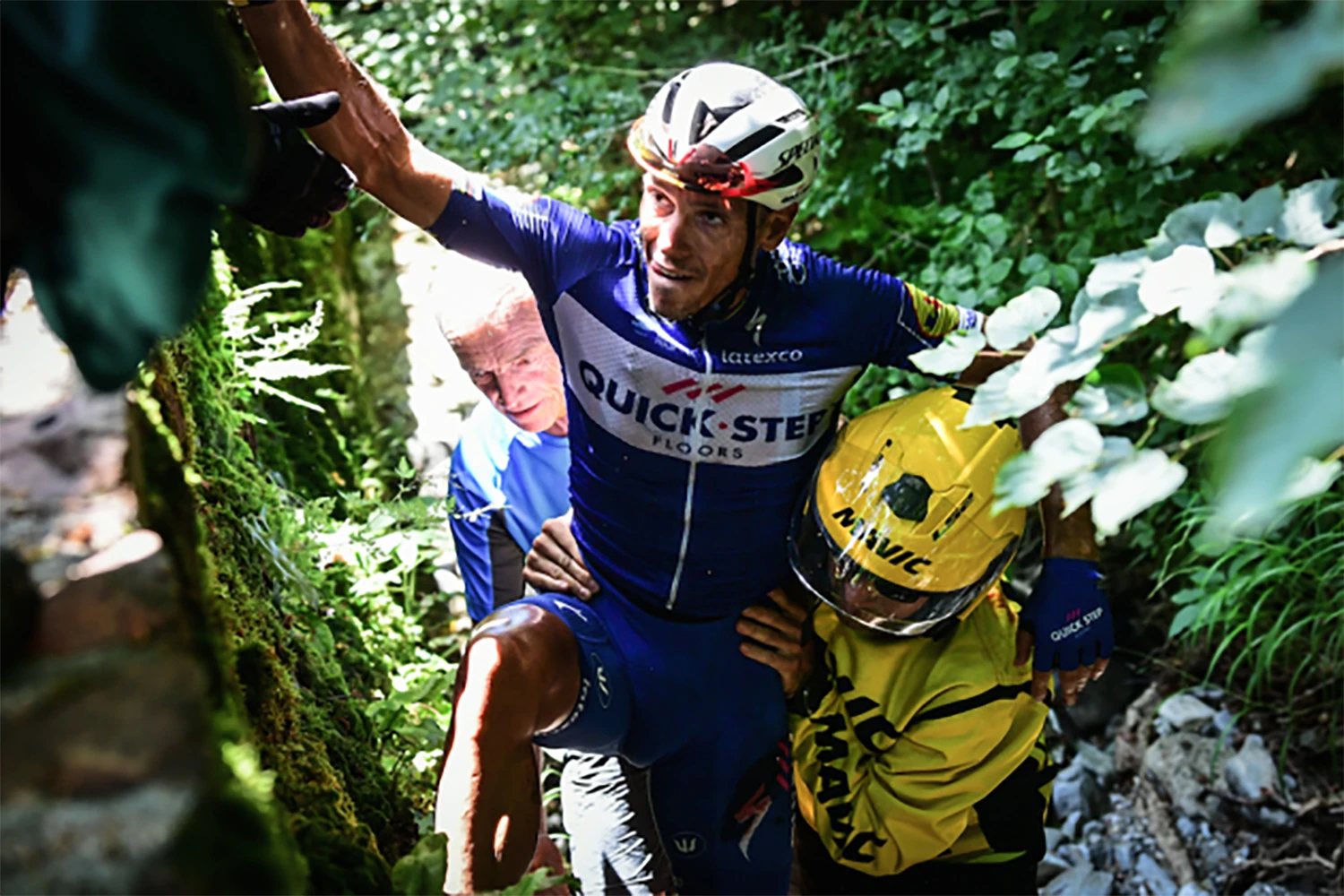
It’s a relaxed affair before the stage start – Max shows me around the race village and the vehicle. We chat to a few of the race officials over a coffee and croissant, then we get ready to leave and head out behind the race convoy. The race convoy is made up of the Mavic Neutral Service Vehicles, two cars per team that follow the peloton, police, motorbikes of his kit – and by the state of the wound, it looks severe. Max says, “allez Alex” and offers support to his countryman. Another rider, Giacomo Nizzolo of Dimension Data, has just started throwing up; he doesn’t look well at all. Race radio calls the medic to assist as he’s badly suffering and is now off his bike. He gets back on (slowly) and holds onto the medic car whilst they give him some pain relief. We then motorpace him back to the peloton.Helicopters are constantly flying above – there are two for TV and three for VIPs; they follow each other around watching the race. The race is now back together and the peloton is soft pedalling. So, off we go, back to the rear of the race convoy. Yesterday’s stage was full gas and we haven’t hit the big stages yet, so there’s no need for the riders to expend too much energy. However, just as we start to relax,there’s an attack announced over the race radio. Now there’s a few riders off the back of the peloton – we bring Marc Soler Gimènez of Movistar back to the group and he dances his way through the motorcade. Max is whistling as we drive fast and hard down a long twisty descent. This is probably his calming method, while I hang on for dear life.
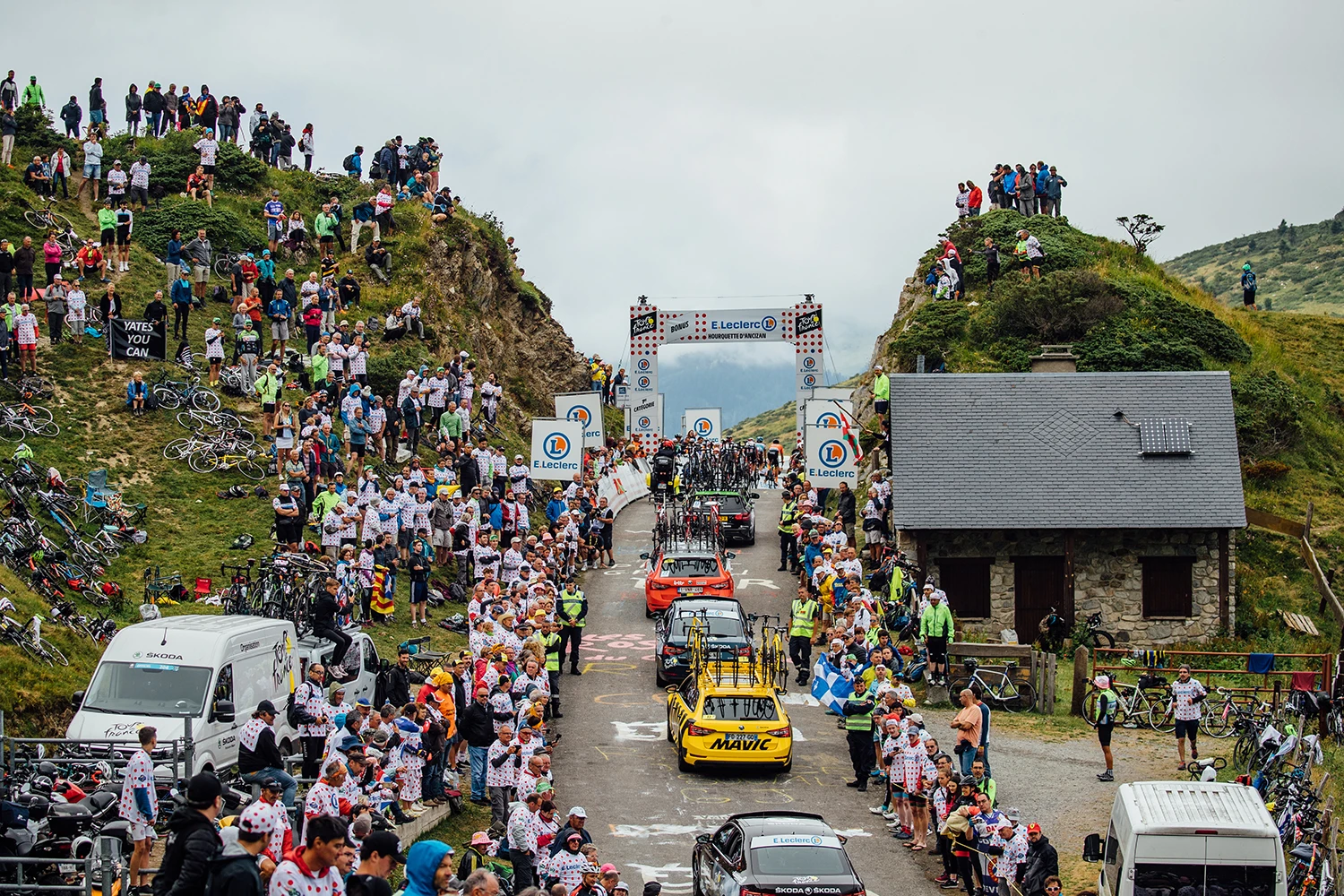
We’re back on the open flat roads, the peloton has chilled out somewhat. One of the race commissaries comes up alongside us, winds down their window and talks to Max. Turns out these guys are friends – as you can imagine with countless races, events and three weeks away at the Tour, friendship on the road is inevitable. He talks about it being difficult for Edvald Boasson Hagen of Dimension Data, unable to win. This is nice to see – they are inside the race, but are still fans with race communications and TV crew, a medical car and an ambulance. The position of the pro team cars is determined by the ranking of each team’s leading rider. Almost all drivers are former pro cyclists and have a natural understanding of the intricacies of moving and weaving among a crowd on two wheels. Reaching a rider in trouble is difficult and understanding the peloton dynamics is key in getting to them in time when every second counts, with regard to injuries and general classification points. The Race Directors (Red Car) keep the movement and positions of both the Mavic and the team vehicles in check. Most importantly, the Red Carboasts a specific communication system that’s in all vehicles. Communication between cars is critical, as breakaways and crashes need to be reported so that permission can be granted for the support cars to break ranks and move up or down the race as needed.
Today, like many days on Le Tour, the course is littered with fans, bands and flares. This is Bastille Day after all, and there’s a reason for celebrating, after all, the French host the world’s biggest and most-watched bike race. As we head out of Saint- Étienne we almost get smoked out by a flare, before the official start. Our Mavic Neutral Service Vehicle (there are three, along with three motorbikes) sits tight behind the race convoy. It’s only after the group attacks and splits apart that we are called to come up behind the riders. Today’s parcours is up and down, and the first climb comes at 25 kilometres, so we will likely be called up then. Max sets the odometer to ensure we know the parcours of the day and where we’re at on the course. The race profile is printed out and stuck to the dashboard, however, today the riders have a different take and go full gas early on, so we move up the race convoy within the first few kilometres.
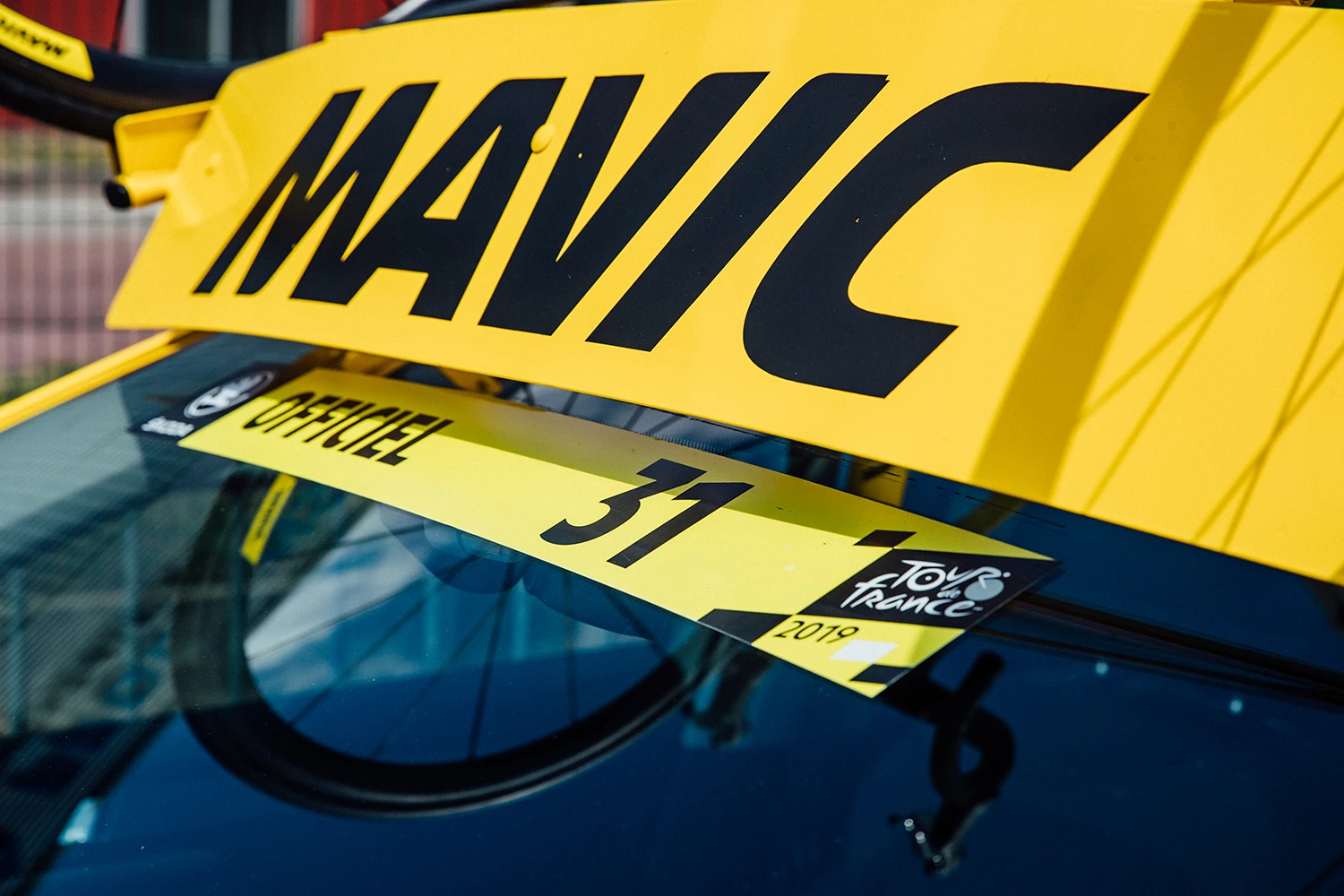
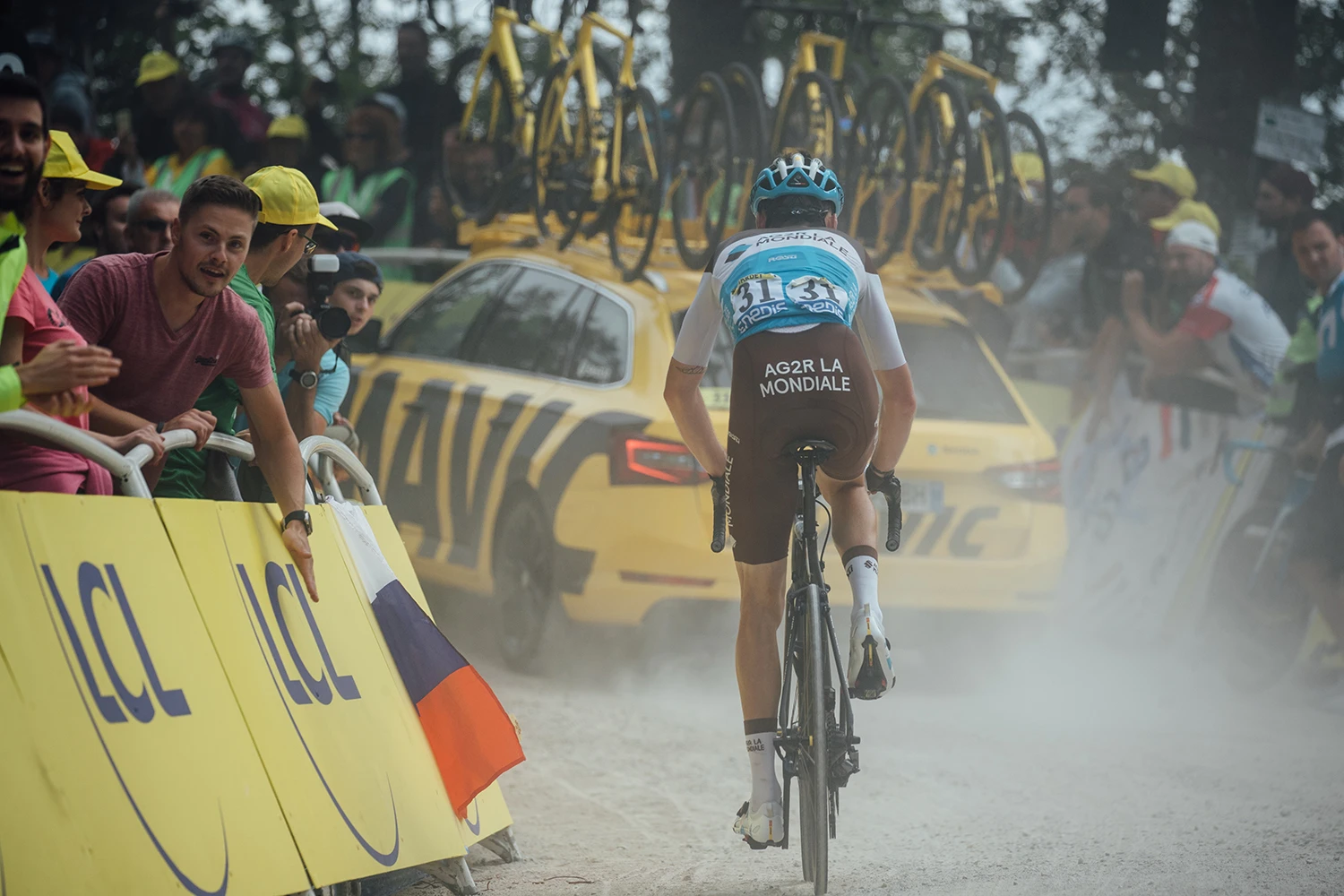
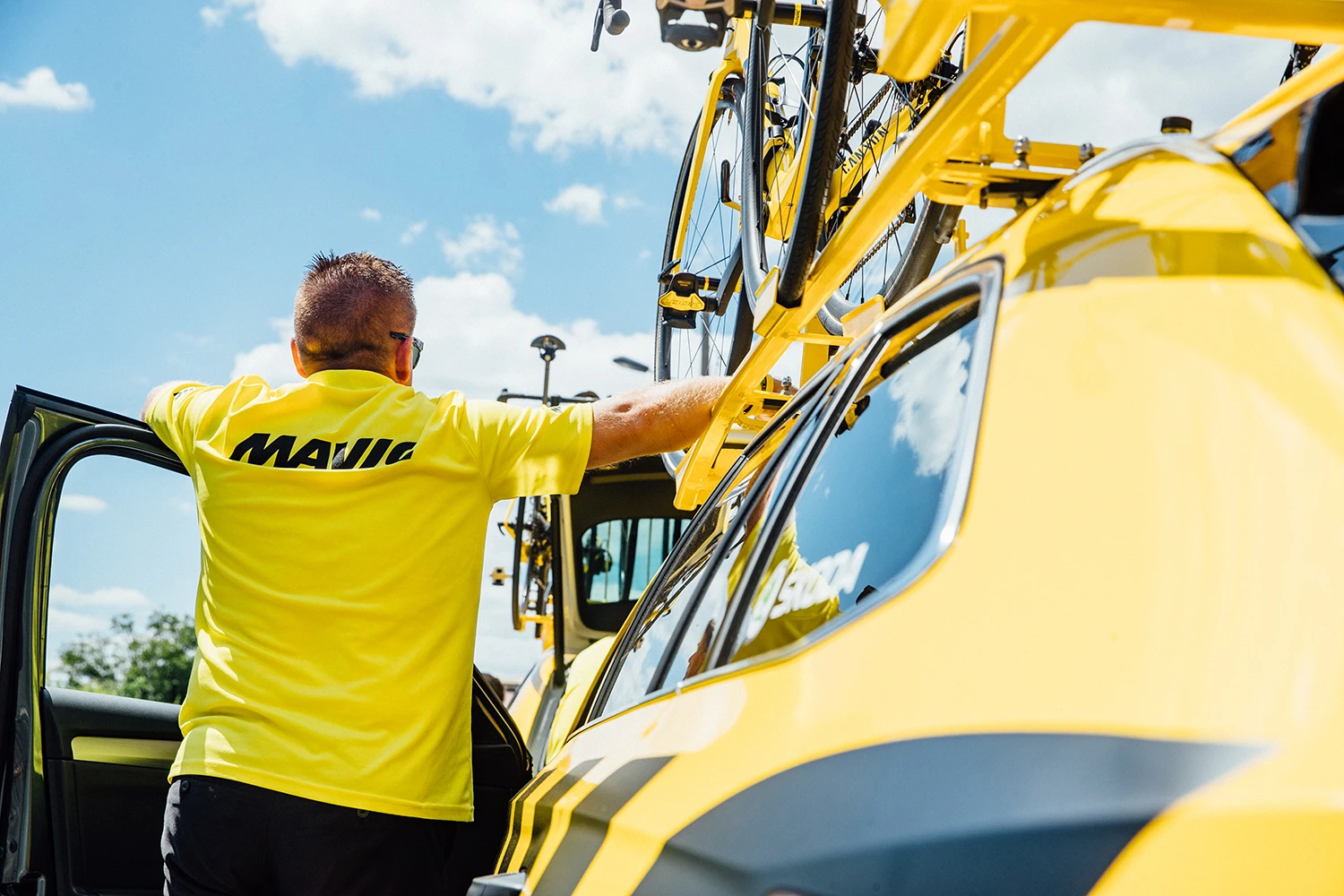
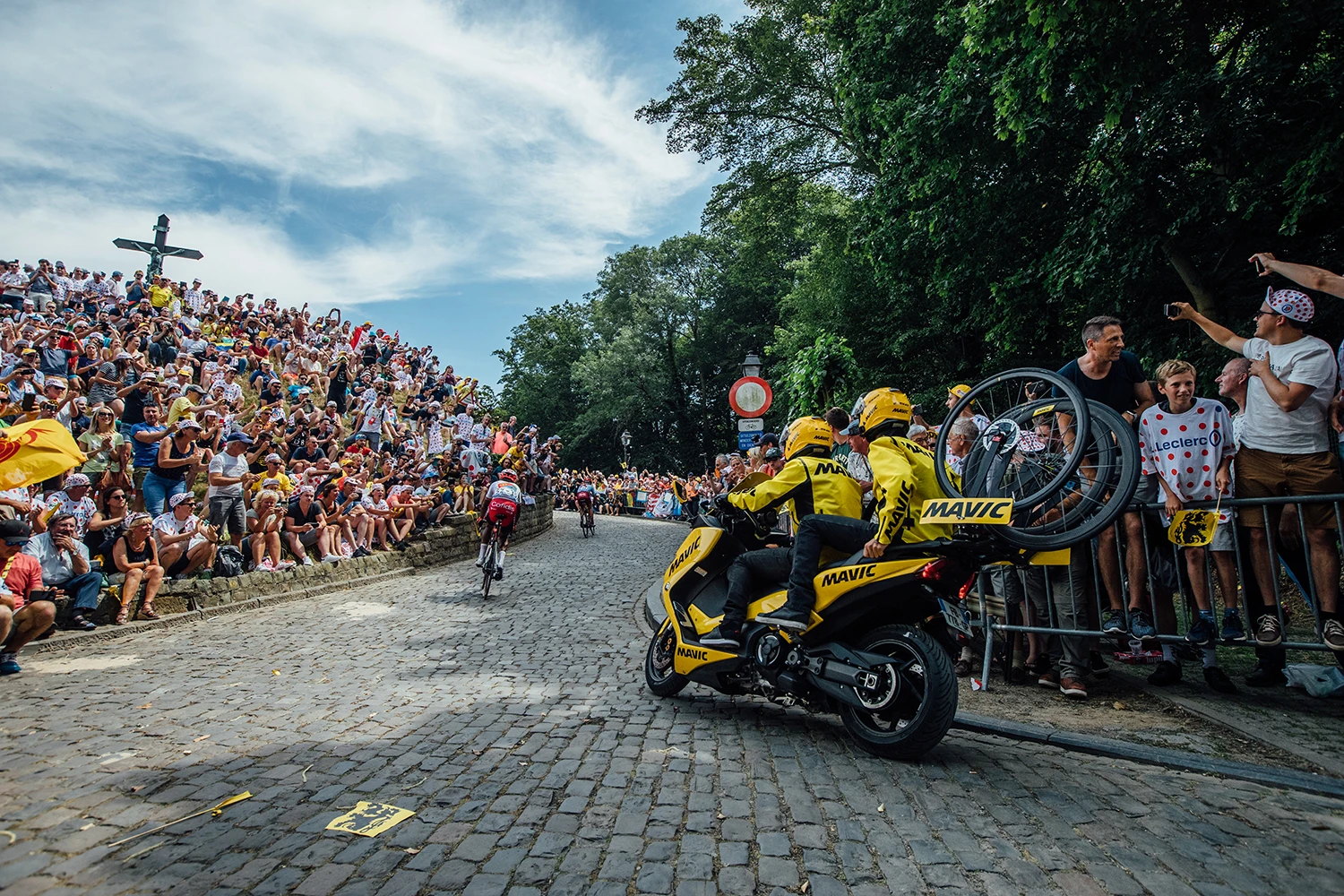
We are now behind the Race Director’s vehicle and the peloton is just ahead of them. The race comes back together and the riders breath for a bit. Caleb Ewan comes back to the car and has a few words with his Director Sportif. The riders slow down and then decide to take a rest stop; this is what you don’t see on TV – riders relieving themselves on the side of the road amongst the lush French countryside. I notice Max keeps a cool head as we rally drive around the narrow lanes. We hit the first climb and the race stays together at the base and over the top. Crowds pack the course, and often we’re on the horn and can’t get through. Race radio warns us about the crowds and to be careful. Max shuts my window, explaining that the public sometimes throw things into the car. Alexis Vuillermoz of AG2R La Mondiale has a bad stack and is patched up, on the move, by the race doctors. He comes past us with rags hanging out.
The race radio bleats out that they need Mavic Neutral Service. Max needs to negotiate a tight old town to get up to the peloton, as we have been waved up. There’s only 25 kilometres to go and the peloton explodes. The race blows apart and opens up. We need to get through a small piece of real estate between the race convoy and the fans lining the tiny lanes. We race through villages as crowds cheer, rail all the tight corners and at some pointeven drive in the gutter. We toot and move up, toot and move up, sliding between team cars and riders. On the final climb, riders are getting dropped left, right and centre, but we need to get through as we need to support them. After some hectic moments, we finally get to the front group. Max tells Neil (the new mechanic), who’s sitting behind me, to get ready and unclip his seatbelt. We are now one of the only support vehicles behind the yellow jersey group and at this moment anything could happen.
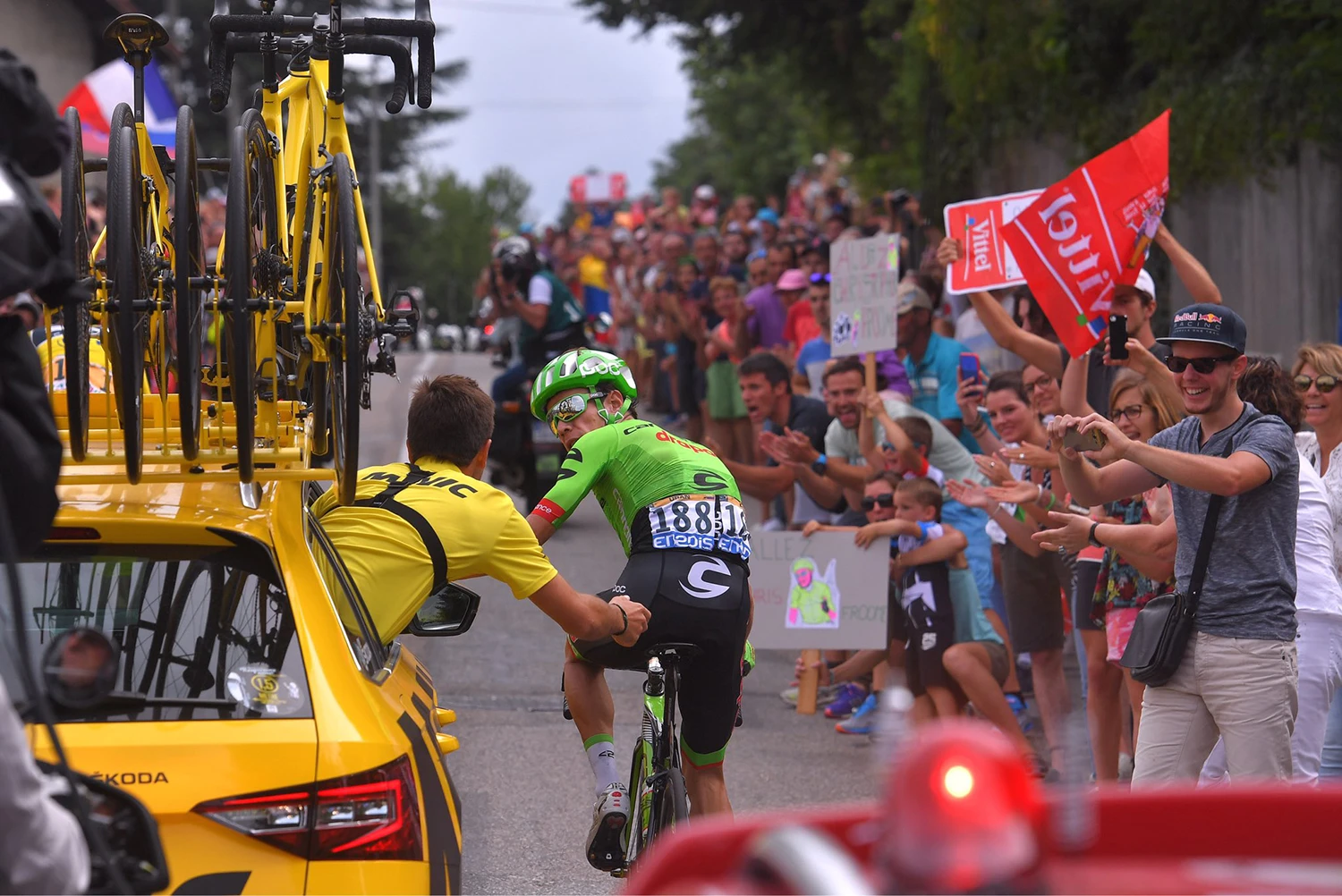
On this occasion it’s all clear, nothing eventuates, and we get over the climb and head down a fast descent. It’s full gas and we’re pushing over 70 clicks per hour. We speed into the final section of the race where the crowds are finally protected by barriers. We enter the town of Brioude and I fly out of my seat as we hit the speed bumps. Just before the finish line, we are directed to turn off the course now that we are just inside the town’s speed limits for open roads. We radio the rest of the Mavic team and ask them where they are. Max can’t find them so we take a short journey into the countryside then make a u-turn. All of a sudden it seems weird to be back on the open roads, going for a tiki tour in a yellow car with bikes on the roof. On this day there wasn’t any drama for us to attend to. So, I call it a good day and ask Neil what he thinks. He says it depends how you look at it – people want to see action.
Mavic Neutral Service Details
Tour de France: 8 staff (mechanic/driver); 3 cars (Skoda Superb); and 1 moto (Tmax) in the race. Four bikes on each roof, set with the two types of pedals used in the TDF (Shimano/Look); five pairs of 11 speed rim brake wheelsets, two pairs of 12 speed rim brake wheelsets, two pairs of 11 speed disc brake wheelsets, two pairs 12 speed disc brake wheelsets (disc wheels set up with 160mm in front and 140mm rotors at the back). Mavic are covering around 70 events worldwide, starting in February with “Tour of Oman”, and finishing in October with “Paris Tour”. Mavic are also covering World Tour Pro Events, MTB Enduro/Crosscountry/DH events and cyclosportif (Grandfondo) events.

